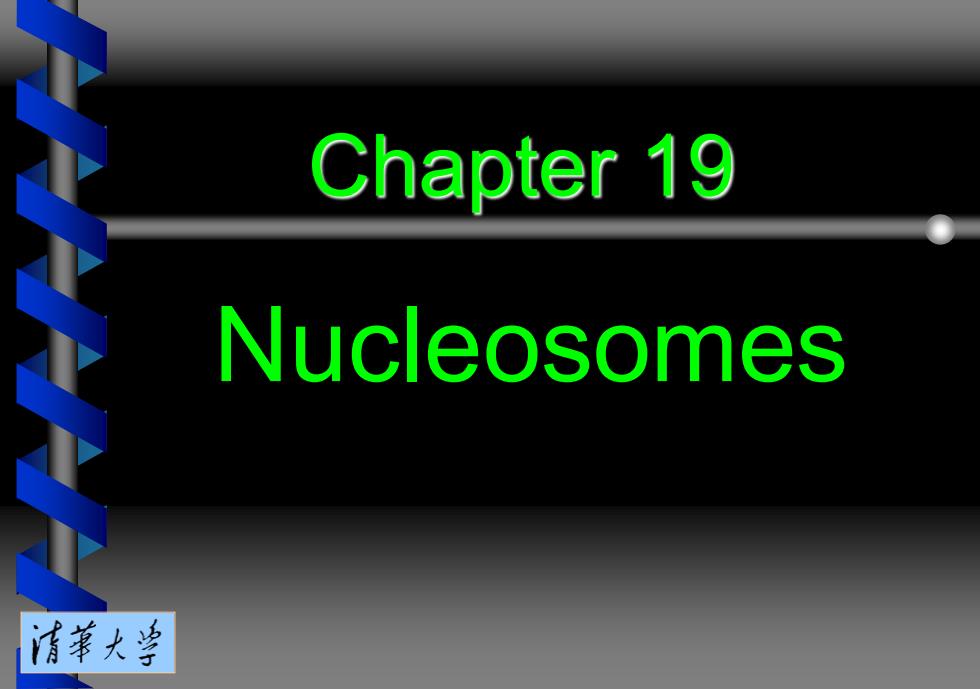
Chapter 19 Nucleosomes 清革大当
Chapter 19 Nucleosomes
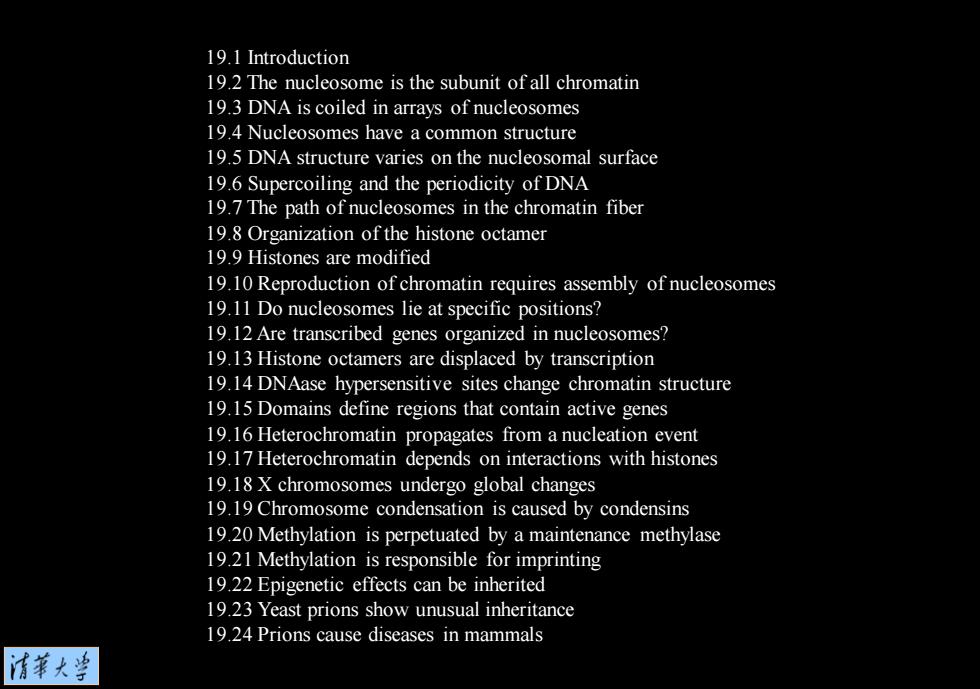
19.1 Introduction 19.2 The nucleosome is the subunit of all chromatin 19.3 DNA is coiled in arrays of nucleosomes 19.4 Nucleosomes have a common structure 19.5 DNA structure varies on the nucleosomal surface 19.6 Supercoiling and the periodicity of DNA 19.7 The path of nucleosomes in the chromatin fiber 19.8 Organization of the histone octamer 19.9 Histones are modified 19.10 Reproduction of chromatin requires assembly of nucleosomes 19.11 Do nucleosomes lie at specific positions? 19.12 Are transcribed genes organized in nucleosomes? 19.13 Histone octamers are displaced by transcription 19.14 DNAase hypersensitive sites change chromatin structure 19.15 Domains define regions that contain active genes 19.16 Heterochromatin propagates from a nucleation event 19.17 Heterochromatin depends on interactions with histones 19.18 X chromosomes undergo global changes 19.19 Chromosome condensation is caused by condensins 19.20 Methylation is perpetuated by a maintenance methylase 19.21 Methylation is responsible for imprinting 19.22 Epigenetic effects can be inherited 19.23 Yeast prions show unusual inheritance 19.24 Prions cause diseases in mammals 情莘大当
19.1 Introduction 19.2 The nucleosome is the subunit of all chromatin 19.3 DNA is coiled in arrays of nucleosomes 19.4 Nucleosomes have a common structure 19.5 DNA structure varies on the nucleosomal surface 19.6 Supercoiling and the periodicity of DNA 19.7 The path of nucleosomes in the chromatin fiber 19.8 Organization of the histone octamer 19.9 Histones are modified 19.10 Reproduction of chromatin requires assembly of nucleosomes 19.11 Do nucleosomes lie at specific positions? 19.12 Are transcribed genes organized in nucleosomes? 19.13 Histone octamers are displaced by transcription 19.14 DNAase hypersensitive sites change chromatin structure 19.15 Domains define regions that contain active genes 19.16 Heterochromatin propagates from a nucleation event 19.17 Heterochromatin depends on interactions with histones 19.18 X chromosomes undergo global changes 19.19 Chromosome condensation is caused by condensins 19.20 Methylation is perpetuated by a maintenance methylase 19.21 Methylation is responsible for imprinting 19.22 Epigenetic effects can be inherited 19.23 Yeast prions show unusual inheritance 19.24 Prions cause diseases in mammals
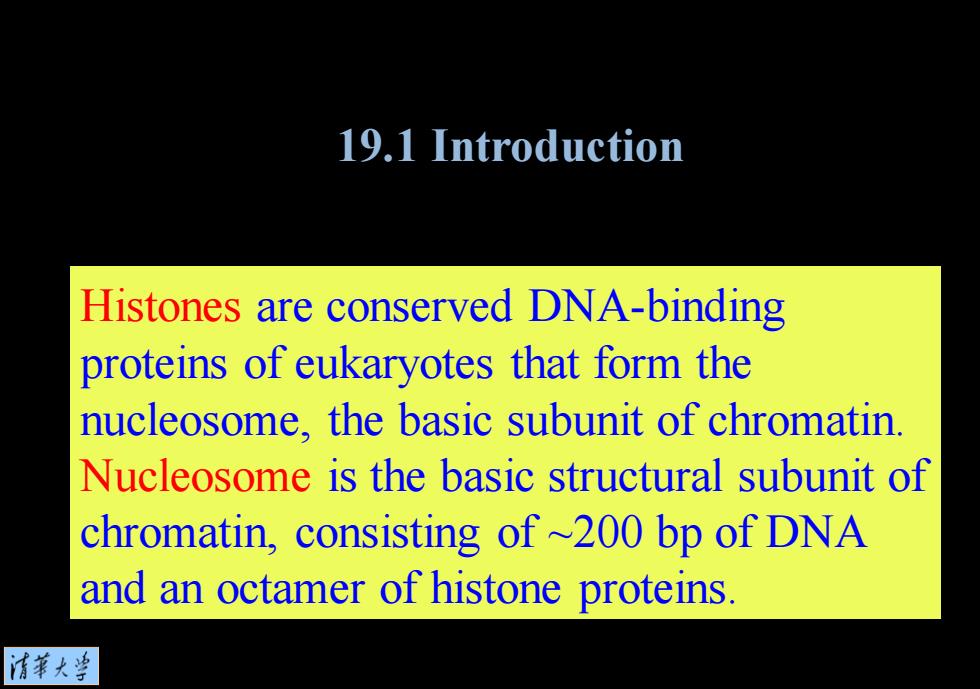
19.1 Introduction Histones are conserved DNA-binding proteins of eukaryotes that form the nucleosome,the basic subunit of chromatin. Nucleosome is the basic structural subunit of chromatin,consisting of~200 bp of DNA and an octamer of histone proteins. 清苇大当
Histones are conserved DNA-binding proteins of eukaryotes that form the nucleosome, the basic subunit of chromatin. Nucleosome is the basic structural subunit of chromatin, consisting of ~200 bp of DNA and an octamer of histone proteins. 19.1 Introduction
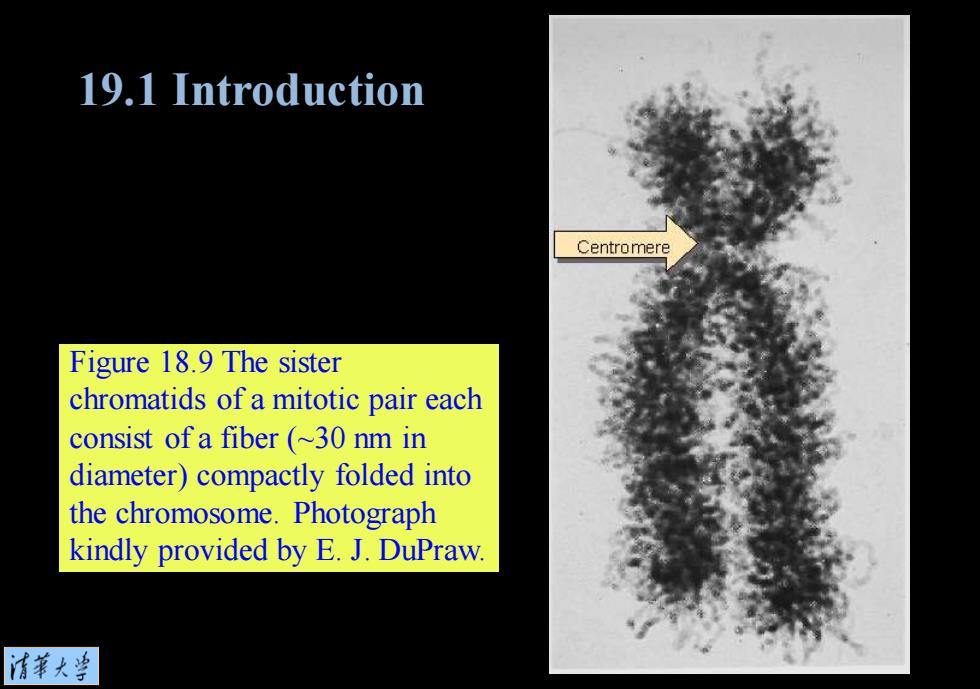
19.1 Introduction Centromere Figure 18.9 The sister chromatids of a mitotic pair each consist of a fiber(~30 nm in diameter)compactly folded into the chromosome.Photograph kindly provided by E.J.DuPraw. 情華大当
Figure 18.9 The sister chromatids of a mitotic pair each consist of a fiber (~30 nm in diameter) compactly folded into the chromosome. Photograph kindly provided by E. J. DuPraw. 19.1 Introduction
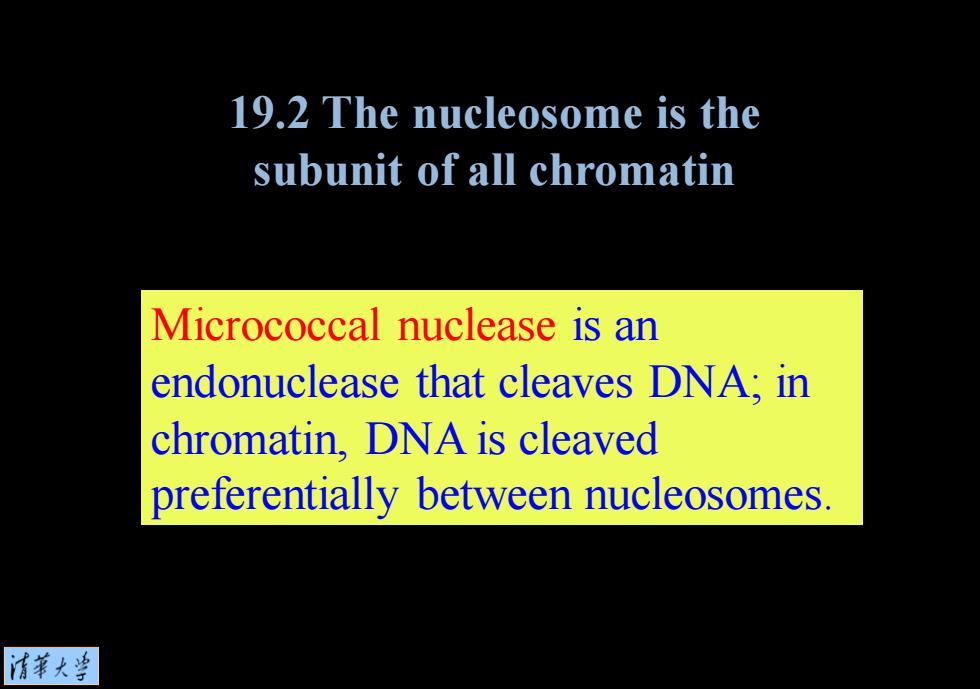
19.2 The nucleosome is the subunit of all chromatin Micrococcal nuclease is an endonuclease that cleaves DNA;in chromatin,DNA is cleaved preferentially between nucleosomes. 清苇大当
Micrococcal nuclease is an endonuclease that cleaves DNA; in chromatin, DNA is cleaved preferentially between nucleosomes. 19.2 The nucleosome is the subunit of all chromatin